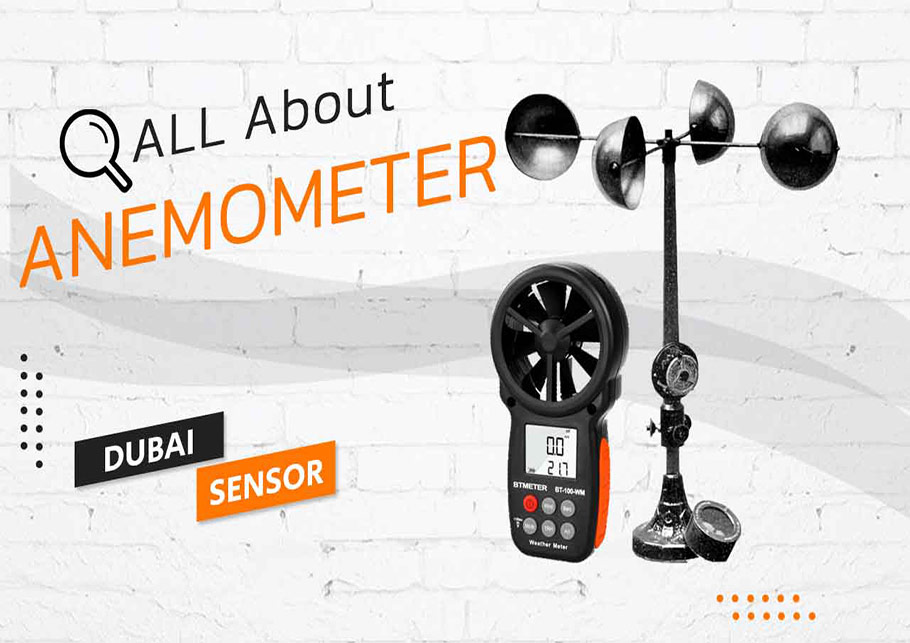How an Anemometer Can Enhance Your Weather Tracking System
How an Anemometer Can Enhance Your Weather Tracking System
Blog Article
All You Need to Understand About Anemometers: How They Function, Why They Issue, and Where to Use Them
Anemometers, though usually overlooked in the world of clinical tools, play an essential role in different fields, offering beneficial insights into wind speed and air flow patterns. As we dig right into the complexities of anemometer technology, we will certainly discover the internal functions of these gadgets, their value, and the crucial factors to consider when picking the appropriate anemometer for details applications.

Anemometer Basics
An important instrument utilized to determine wind speed and direction, the anemometer plays an important function in weather forecasting and numerous markets. An anemometer typically consists of 3 or 4 mugs that turn in the wind, a vane that aims right into the wind, and sensing units to track the rotations or activities.
There are various types of anemometers offered, including mug anemometers, vane anemometers, hot-wire anemometers, and sonic anemometers, each with its distinct functions and applications. Mug anemometers are generally made use of for standard wind rate dimensions, while vane anemometers are favored for directional dimensions.
Concepts of Anemometer Operation
Structure on the foundational understanding of anemometer fundamentals, the concepts of anemometer operation clarify the mechanics behind wind speed and instructions dimensions. Cup anemometers, for instance, have three or even more cups that catch the wind, creating them to spin faster as the wind speed increases. Hot-wire anemometers rely on a heated wire that cools down as wind passes over it, with the price of cooling identifying the wind rate.
Relevance of Anemometers
Anemometers play an important function in measuring wind rate and instructions, providing important information for weather condition forecasting, environment research studies, environmental monitoring, and aviation operations. Meteorologists depend on anemometers to collect accurate wind information, helping them comprehend climate patterns, predict storms, and issue timely warnings to the public. Wind farm drivers utilize anemometers to evaluate wind conditions and make best use of electrical energy production from wind generators.
Applications Throughout Various Industries
Applications of anemometers extend throughout varied markets, showcasing their flexibility and utility past weather forecasting. In the sustainable power industry, anemometers play an important function in analyzing wind conditions for wind ranch placements, making sure optimal power production. Industries like building and mining utilize anemometers to keep an eye on wind rates, critical for security procedures, especially when operating at heights or in open-pit mines where strong winds can position dangers. Anemometers are likewise integral in the aeronautics industry, aiding pilots in recognizing airspeed and wind direction for safe liftoffs and touchdowns. The maritime market take advantage of anemometers for ship navigating, aiding sailors prepare for weather adjustments and readjust routes appropriately. In agriculture, anemometers assist farmers in taking care of crop spraying by supplying real-time data on wind speed to avoid drift. Anemometers find applications in HVAC systems to optimize airflow and boost power efficiency in structures. The diverse usage instances of anemometers highlight their significance throughout various markets, highlighting their crucial role in boosting operational safety and efficiency (anemometer).

Selecting the Right Anemometer for Your Needs
Choosing the proper anemometer customized this hyperlink to your details requirements is vital for acquiring accurate wind rate and direction measurements. When selecting an anemometer, take into consideration factors such as the intended application, needed dimension range, ecological problems, and preferred attributes. For general objectives, a mug anemometer is appropriate for determining wind rate, while a vane anemometer gives wind instructions data. Hot-wire anemometers are suitable for reduced airspeed dimensions, and ultrasonic anemometers offer high accuracy and toughness.

Conclusion
In final thought, anemometers play an essential duty in determining wind rate and direction across various markets. It is vital to think about the value of anemometers in order to make informed choices when choosing the most suitable device for determining wind conditions.
There are different types of anemometers offered, including cup anemometers, vane anemometers, hot-wire anemometers, and sonic anemometers, each with its special features and applications. Mug anemometers are commonly utilized for basic wind speed measurements, while vane anemometers are liked for directional measurements. Hot-wire anemometers are ideal for low airspeeds, and sonic anemometers are suitable for high-precision dimensions in research and commercial settings.Building on the foundational try this website understanding of see post anemometer basics, the principles of anemometer procedure clarify the auto mechanics behind wind speed and direction measurements. For basic functions, a cup anemometer is suitable for gauging wind speed, while a vane anemometer offers wind direction information.
Report this page